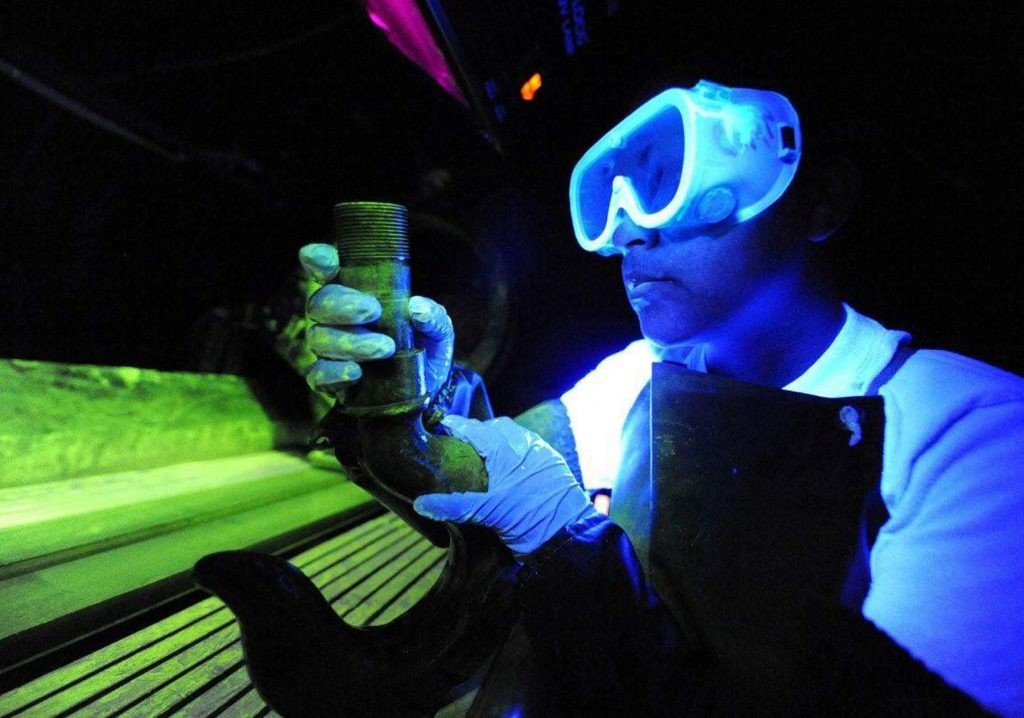Optics and Photonics plays an increasing role in aircraft and aviation. From heads-up displays to onboard fiber optical networks, photonics helps improve aircraft monitoring and maintenance in a way that is not possible with copper based electrical systems. While many of the improvements in commercial aircraft take place in areas of a plane that passengers don’t see, there are still some improvements that occur inside the passenger cabin, such as LED lighting and electrochromatic dimming of windows.
Electrochromatic Dimming, standard on the Boeing 787 Dreamliner replaces traditional mechanical windows shades with a modern photonic technology. An electrified gel sandwiched between two layers of glass are controlled with an electric current. As the current increases, the gel darkens and can be reversed by decreasing the current. Each seat can control their own widow or the flight attendants can control a section or the entire plane’s windows.
Heads Up Displays, or HUD, projects the image of one or more cockpit display screens onto a transparent surface, so that the information from the screen is overlaid on the view the pilot sees through the aircraft windshield. The optical path of the HUD incorporates magnifying and collimating lenses and a thick piece of glass for the transparent screen.
Source: Optics and Photonics News

Nondestructive Testing. How can inspectors tell when part of the structure of an airplane has been weakened and should be replaced? Not just by looking—the flaws may be too small to detect with the naked eye. And pilots can’t exactly pull their vehicles off to the side of the road to check a wavering wing.
Thermal imaging is one method used for aircraft inspection as well as for quantitative characterization of metallic and composite materials. Researchers can measure changes in the density or thickness of corroding metals, or the fiber volume fraction of composites. They can also assess changes in density that may be due to porosity, entrapped voids in the material, or delaminations or microcrack density in the material.
Photo Courtesy U.S. Air Force/James M. Bowman
Related Courses found in the B.S. in Photonic Science and Engineering Program at UCF:

Optoelectronics and Lab
The course includes a description of the interaction of light with semiconductor materials in a p-n junction configuration, the phenomena of absorption, electroluminescence, and stimulated emission. The distinction between direct and indirect compound semiconductors materials is noted. Includes photodiodes, light emitting diodes (LEDs), semiconductor optical amplifiers, and laser diodes. Array detectors, including complementary metal-oxide-semiconductor (CMOS) and charge-coupled devices (CCD) arrays, and array LEDs are included. Basic specifications and applications of each of these devices are described, including solar cells, imaging with array detectors, and LED displays.

The course covers three topics: 1) The optical fiber as a transmission channel. 2) Optoelectronic devices used in transmitters, receivers, and multiplexers. 3) Design of the overall communication system and assessment of its performance.

This class consists of analysis of optical systems consisting of lenses, mirrors, and apertures. Image plane, principal planes, and entrance and exit pupils. Magnification, field of view, F-number, image-plane irradiance. Assessment of image quality resulting from diffraction and geometrical and chromatic aberrations, using optical design software. Analysis and design of photonic systems including systems consisting of waveguides and integrated-optic components. Fidelity and noise in optical systems. Numerical simulation using photonic design software.

This course introduces the basic principles of two- and three-dimensional imaging systems. It includes the mathematics of image formation as a linear system and introduces point spread function, transfer function, resolution, and restoration. Objects such as microscopes, telescopes, and copiers operating in the gazing and scanning configurations are modeled and their resolution assessed. Interferometric imaging systems and their applications in metrology are described.

Laser Engineering and Lab
Includes the concept of a photon, processes of interaction of light with matter (and its application to detectors), the generation of light via spontaneous and stimulated emission, atomic transitions leading to fluorescence. Properties of lasers are introduced as the basis of optical amplifiers. Optical resonators are described as a means for optical feedback. Lasers as an optical oscillator are compared to radio and microwave oscillators. Basic characteristics and types of lasers: continuous wave and pulsed lasers. Covers commercial, industrial and medical applications of lasers. Nonlinear optics and its use for wavelength conversion.